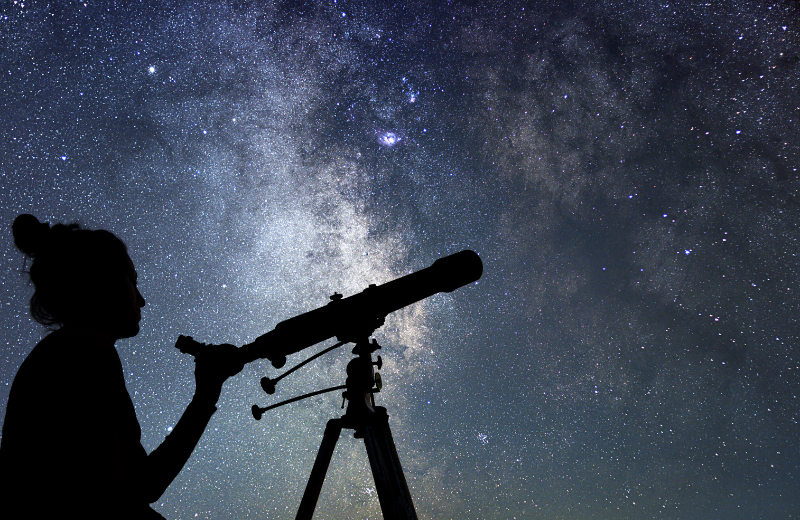If you’re fascinated by the night sky and enjoy learning about the different constellations, the Pictor constellation might be a curious and lesser-known one for you to explore. This guide explores its meaning, how far it is from Earth, its stars, and how you can find it in the night sky.
Jump To
What is the Pictor Constellation?
Pictor is a small constellation located in the Southern Hemisphere. The name ‘Pictor’ comes from the Latin word for ‘painter,’ and its full name is ‘Equuleus Pictoris,’ which means ‘the painter’s easel.’ The constellation was named by the French astronomer Nicolas-Louis de Lacaille in the 18th century when he catalogued several constellations while mapping the southern skies. Pictor is one of these constellations, and it was created to represent the tools of an artist—specifically, an easel.
The constellation itself might not be as famous as Orion or the Big Dipper, but it holds its own charm. Despite its small size, it has an interesting history and can be seen best from the Southern Hemisphere.
The English name for Pictor remains the same, though it is sometimes simply called ‘The Easel.’
Recommended for you!
Best SellersWhat Does Pictor Look Like?
Pictor may not be the most visually striking constellation, but it’s certainly a unique one. It lies close to the constellations of Carina and Dorado, and it forms a modest shape that represents a painter's easel. Unlike constellations with distinctive shapes or patterns, Pictor requires a bit of imagination to visualise as an easel.

How Far is the Pictor Constellation from Earth?
The distance to a constellation is not as straightforward as measuring the distance to a single star since constellations are made up of many stars at various distances. However, if you focus on the brightest star in Pictor, Alpha Pictoris, it is approximately 97 light-years away from Earth. This distance gives you an idea of how far the stars of this constellation are from our planet, showcasing the vastness of our universe.
The Pictor Constellation Myth
Nicolas-Louis de Lacaille, in his effort to chart the southern skies, named Pictor along with other constellations like Microscopium (the Microscope) and Telescopium (the Telescope) to symbolise tools used in science and art.
Though it lacks an ancient story, Pictor still represents a link between art and astronomy, merging creativity with exploration of the cosmos.
Pictor's Stars
Pictor features several notable stars that make up its constellation. Here's a look at some of the most important stars within this constellation:
- Alpha Pictoris: The brightest and most significant star in Pictor, Alpha Pictoris is a white main-sequence star. It shines with a magnitude of approximately 3.3 and is located around 97 light-years from Earth, making it visible to the naked eye under clear skies.
- Beta Pictoris: This young star is a standout in Pictor due to its surrounding disk of dust and debris, which could be forming planets. Situated about 63 light-years from Earth, Beta Pictoris is one of the most studied stars in the search for exoplanets, and its planetary system has been directly imaged by astronomers.
- Gamma Pictoris: Though not as bright as Alpha or Beta Pictoris, Gamma Pictoris is another star visible without a telescope in favourable conditions. It adds to the constellation’s structure, providing valuable insights into planetary systems beyond our own.
Nebulae in the Pictor Constellation
Pictor doesn’t boast many bright nebulae like some other constellations, but it does contain the Pictor A galaxy. Pictor A is a large, active galaxy emitting powerful jets of radio waves. These jets, extending from the galaxy’s core, are a significant focus for astronomers studying black holes and galactic formations. Though not visible with the naked eye, these features add depth to Pictor’s otherwise quiet profile in the night sky.
Finding Pictor in the Sky

To see Pictor at its best, aim to stargaze during the summer months between January and March when the constellation reaches its highest point in the sky, offering clearer visibility.
Locating Pictor
To locate Pictor, start by identifying its neighbouring constellations—Carina, Puppis, and Dorado. These constellations serve as helpful reference points. Once you've found them, you should be able to pinpoint Pictor among them.
For a clearer view, using a star map or a stargazing app can assist you in identifying Pictor’s position in the night sky, particularly if you want to focus on its brightest stars like Alpha Pictoris.
Viewing Pictor with Binoculars or a Telescope
- With Binoculars: While Pictor’s stars are not the brightest, binoculars can help you enhance their visibility and trace the subtle shape of the constellation.
- With a Telescope: A telescope provides a more detailed look, allowing you to observe Alpha Pictoris and Beta Pictoris with greater clarity. You may even be able to glimpse Beta Pictoris’s dust disk, a fascinating feature for astronomers.
Best Viewing Conditions
For the best viewing experience, find a location with minimal light pollution and a clear, dark sky on a moonless night. This will give you the optimal conditions to fully appreciate Pictor and its stars.
Fun Facts About Pictor
- Pictor's Location in the Sky: Pictor is the 59th largest constellation in the sky, covering an area of approximately 247 square degrees. It is bordered by several constellations, including Carina, Columba, and Volans.
- Discovery of Exocomets: In addition to planets, astronomers have also detected exocomets around Beta Pictoris. These comets provide insights into the star’s planetary system and its formation processes.
- X-Ray Emissions: The star Beta Pictoris has been found to emit X-rays, which is relatively rare for stars of its type. These emissions help astronomers study the interactions between the star’s magnetic field and its surrounding disk.
- The Constellation’s Age: Pictor is considered a relatively young constellation in terms of human recognition, as it was catalogued only in the 18th century by Lacaille. However, its stars, like Beta Pictoris, are also relatively young, estimated to be around 20-25 million years old.
- Gamma-Ray Burst Observations: Pictor has been an area of interest for astronomers studying gamma-ray bursts, high-energy events in the universe. Observations made in this region have contributed to our understanding of these powerful cosmic explosions.
- Multiple Star Systems: Besides its well-known single stars, Pictor contains several multiple star systems. For example, Zeta Pictoris is a binary system consisting of two stars that orbit each other, offering astronomers a chance to study stellar dynamics.
Recommended for you!
Best SellersStudy Astronomy for £29
The Pictor constellation is a stunning and significant part of the night sky, offering beauty and rich history. If you're inspired to delve deeper into the wonders of astronomy, why not explore the Astronomy Diploma Course with Centre of Excellence? Whether you're a beginner or someone with more experience, this course will guide you through everything you need to know about the stars, constellations, and galaxies. And for a limited time, you can enrol for just £29!












